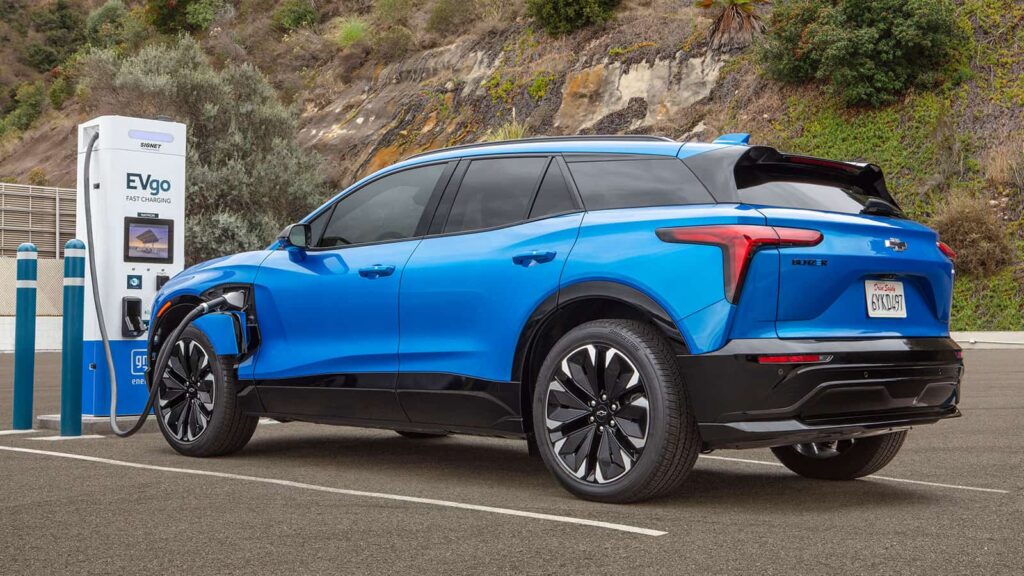CATL and GM May Partner to Open LFP Battery Factory in North America
Recent reports indicated that Chinese battery behemoth Contemporary Amperex Technology Co. Limited (CATL) is negotiating with General Motors about a licensing agreement for lithium iron phosphate (LFP) batteries. This potential partnership aims to share battery technology through a License Royalty Service agreement, specifically targeting the LFP battery. The talks also include plans to establish a joint manufacturing facility in North America.
While details are sparse, the anticipated capacity of this joint venture focused on LFP battery technology is expected to rival, if not exceed, the scale of the battery plant currently under development by Ford in collaboration with CATL. The location of the proposed factory is still under deliberation, with possibilities including various sites in the United States or Mexico.

What the GM & CATL Deal Looks Like
The agreement under discussion between CATL and GM is expected to closely mirror the operational and financial structure of the existing collaboration between CATL and Ford. Under this model, CATL would assume the responsibility for the critical aspects of establishing battery production capabilities, including the construction of production lines, developing the necessary supply chains, commissioning production line equipment, and overseeing the manufacturing processes.
This arrangement strategically positions CATL not as an equity stakeholder in the facility but rather as a technology and service provider. In exchange for its expertise and contributions, CATL would receive patent licensing fees and service fees, ensuring a continuous revenue stream without the need for direct ownership.
The capital expenditure required to build the factory would be entirely funded by the car manufacturer — in this case, GM. This collaboration format allows CATL to minimize its capital investments while potentially enjoying higher profit margins due to the licensing model.
Ford’s battery plant is scheduled to open in 2026. If the GM deal happens, the factory will likely open around 2027.
North American EVs and Foreign Battery Companies
Historically, the North American EV battery market has been predominantly controlled by Japanese and Korean producers, with industry leaders like LG, Samsung SDI, SK, and Panasonic accounting for approximately 80% of the market share.
The strategic partnership between CATL and General Motors, and that partnership’s analogous nature to the collaboration between CATL and Ford, is timely and tactical amid these market dynamics.
This move is particularly influenced by recent U.S. regulations, notably the 2022 Inflation Reduction Act. Under this legislation, the U.S. government incentivizes the domestic production of EVs and their components. An EV manufactured in North America is eligible for a $7,500 tax credit, with $3,750 of this amount extendable to the battery producer, contingent on the stipulation that more than half the cost of the battery’s components are produced or assembled within North America. For the GM Ultium platform and GM’s models to be eligible for the tax credit, such as a Chevy Bolt battery, the batteries must be produced in the U.S.
Recent regulations in the United States have introduced the concept of a “foreign entity of concern” (FEOC), which directly impacts companies like CATL when considering investments in the U.S. EV market.
Specifically, these regulations stipulate that tax credits available for electric vehicles — integral to fostering the adoption of EVs — may be withheld if critical battery components or minerals are sourced from certain countries, including China. Under this framework, any company incorporated in China or where the Chinese government holds a stake of 25% or more could be classified as an FEOC.
To circumvent the restrictions and implications of being labeled an FEOC, CATL has adopted a strategic approach through licensing agreements rather than establishing wholly owned or joint-owned manufacturing facilities in the U.S. This method was evident in the agreement with Ford, where CATL could sidestep the FEOC-related restrictions.
It’s understood that, through this deal, CATL not only receives a one-time payment for selling the requisite battery production equipment and establishing a supply chain but also benefits from ongoing royalties based on the volume of batteries produced.
Both the Ford deal and the reported GM deals shine a spotlight on LFP battery innovation, a critical pivot in the EV battery market. LFP batteries are considerably cheaper to produce than their nickel-cobalt-manganese (NCM) counterparts. This cost effectiveness makes LFP batteries particularly appealing for the production of more affordable EVs, which is a growing segment of the market keen on making electric mobility accessible to a wider audience.
South Korean and Japanese battery manufacturers have predominantly focused their efforts on the more traditional NCM batteries, largely overlooking the LFP battery sector. This oversight has provided Chinese producers, most notably CATL and BYD, with the opportunity to dominate the LFP battery market.

Electric Vehicle Marketing Consultant, Writer and Editor. Publisher EVinfo.net.
Services